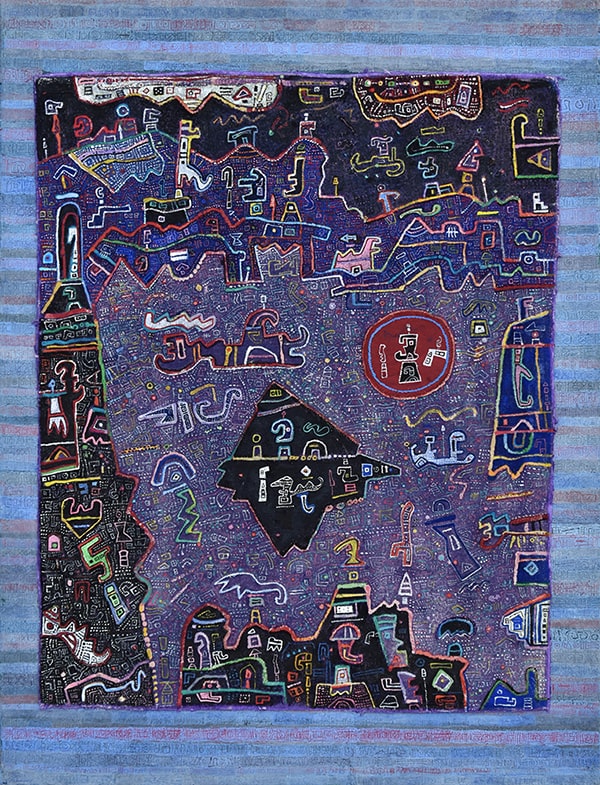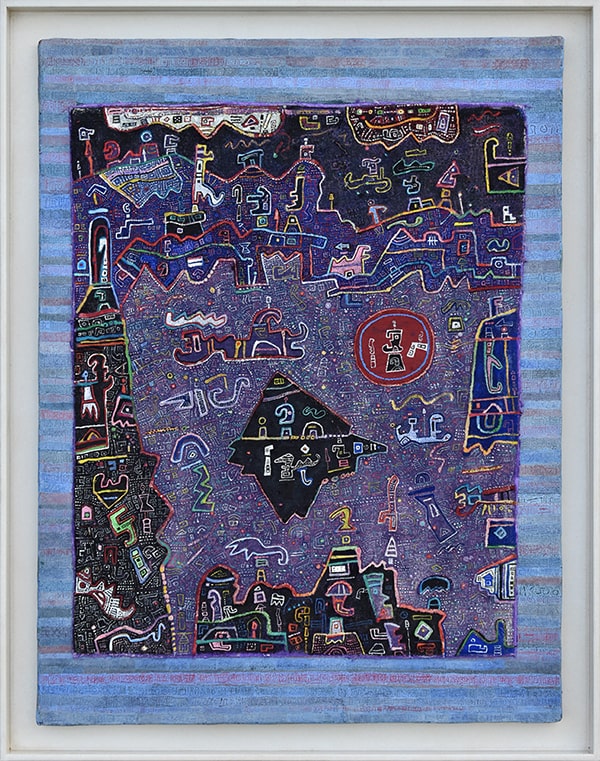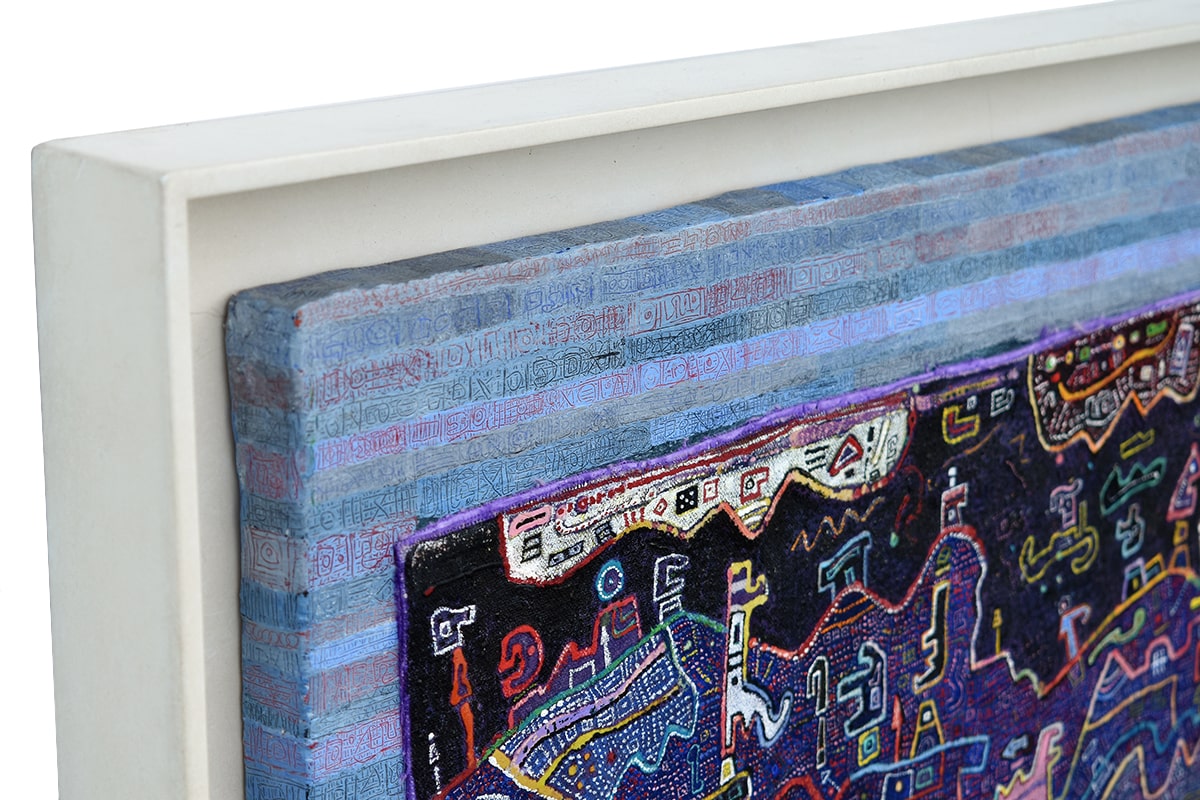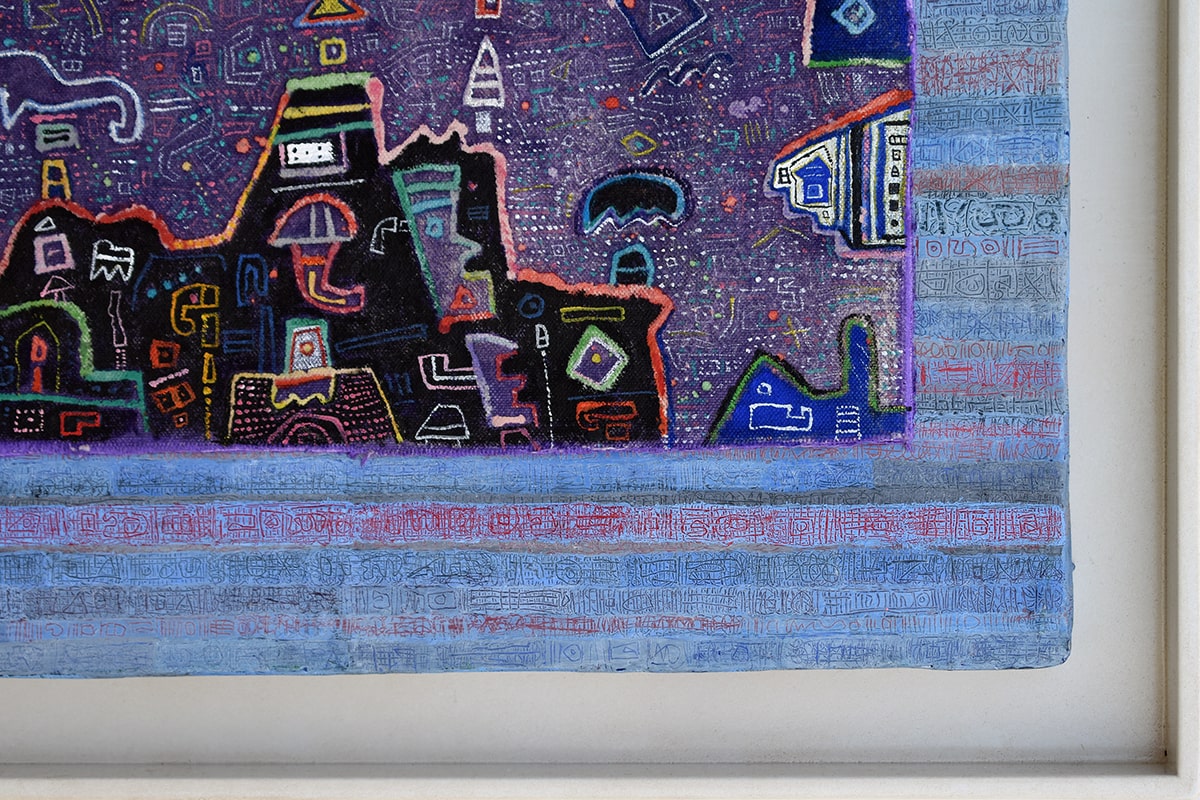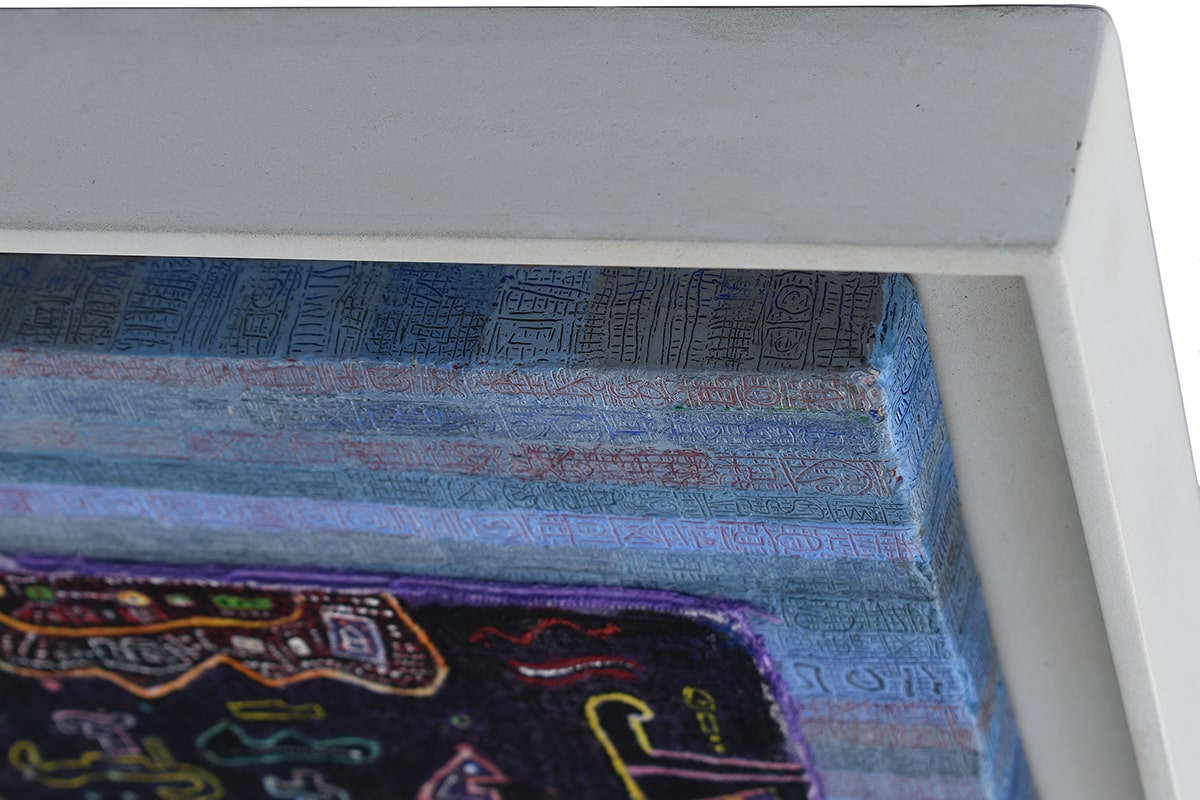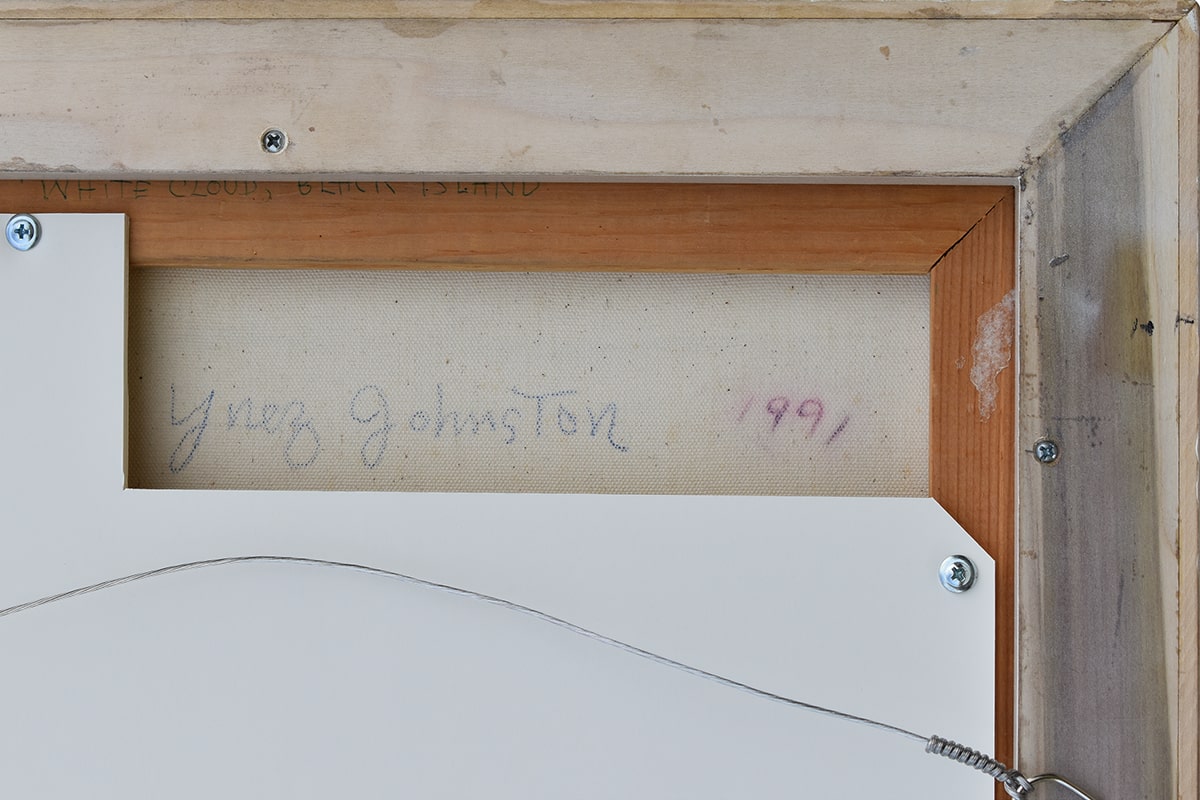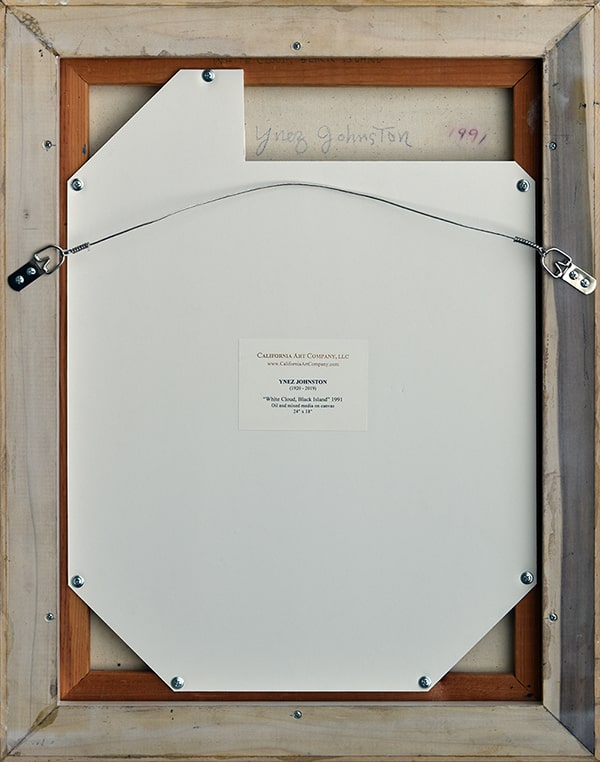Ynez Johnston
(1920-2019)Oil and mixed media on canvas
24 Inches x 18 Inches
Framed Size: 26½" x 20¾"Provenance
Studio of Ynez Johnston, Los Angeles
Collection of Tom D'Alessandro, Tequesta, Florida
Modern Art West, Sonoma, California
Additional Information
Frame by Handcrafted Archival Framing, Santa Fe Springs, CA.
Images presented are compressed for website optimization. For higher-resolution images or Facetime viewing with ultraviolet light, please contact us.
We buy and sell paintings by Ynez Johnston (1920-2019)
Painter/printmaker Ynez Johnston was born in 1920 in Berkeley, California. She studied drafting, painting, and printmaking at the University of California with Worth Ryder, Erle Loran, and Margaret Peterson. Johnston’s work is characterized by “jigsaw” shapes reminiscent of primitive designs. Her unique style blends modernism and ancient art forms from her travels to Italy, Mexico, India, and Nepal. She has also done 3-dimensional pieces in collaboration with her husband, poet, and novelist John Berry and with ceramic sculptor Adam Mekler.
Her watercolors, oils, and etchings of the 1950s and 1960s were rich with complex imagery and displayed a disciplined and somewhat restrained use of color.
The display of her paintings and etchings in an exhibition at the Museum of Modern Art in New York (1951) was the launch of her career as a successful artist.
In later mixed-media pieces, she examined the tactile qualities of the surface. The paintings involve the combination, and occasional lamination, of diverse material soil, acrylic, dyes, encaustic on cloth, canvas, and raw silk. The colors are vibrant, and the images are composite forms suggesting ambiguous architectural, human, animal, and plant shapes. Johnston cites Persian and Indian art as influences along with such artists as Matisse, Miro, Klee, and Picasso.
She received a grant from the National Endowment for the Arts, a Guggenheim Memorial Foundation Fellowship, first place in watercolor at the Metropolitan Museum of Art in 1952, and Fresno Art Museum’s Distinguished Artist Award in 1992. She exhibited at the San Francisco Museum of Art and at Mitsukoshi in Tokyo. Her work is in the collections of the Museum of Modern Art and the Metropolitan Museum of Art in New York City.
(Tobey C. Moss Gallery, West Hollywood) Ynez Johnston is an architect of fantastic realms. Though she may skirt reality, she never quite eradicates the concrete. She just disguises it. Her idiosyncratic vocabulary of forms derives from a collective cultural history. But references metamorphose into a unique fusion of elements that show no regard for the actual physical world.
Throughout her career, Johnston has experimented with a variety of mediums that include etchings, lithography, oils, watercolor, paper maché, ink dyes, sumi on rice paper, and casein. Crucial to her inventive composites are the influences of Mogul and Tibetan artists, Pre-Columbian stone carvings, artists such as William Blake, and the obsessive proclivities of Persian paintings. The melding of sources suggests a line between cubism, European surrealism, and the overall qualities of American abstract expressionism. Her personal evocations of abstract geometry are particularly reminiscent of the fanciful linear styles of Paul Klee and Mark Tobey.
By combining mythic designs with the precepts of modernism, she evokes hybrids of universal forms and familiar landmarks. But they evolve strictly out of Johnson’s fertile imagination, a synthesis of outer and inner visions. As though spilling out of an overcrowded subconscious, a multitude of geometric forms and shapes transmute into intricate designs. Palace of the Snow Leopard [1971], for example, is dominated by a form that looks like a cross between animal and architecture. The stylized figure bears a conglomeration of colorful designs and symbols. It appears a strange hybrid of a Mayan stylized animal and a Chinese horse. It is pure contrivance.
A fifty-year survey reveals how Johnston’s stylistic developments have gone through cycles and mutations. But the vitality of her colors remains prevalent, and certain forms and themes have a continuous life span. The repetition of mythic shapes, particularly a mandala-like form, strengthens the enduring psychological power of ancient myths.
Mythical urban landscapes also remain a constant throughout her oeuvre. In Arabia [1960], her abstract depiction of crowded environs recalls the surreal urban representations of Philip Guston. Through time, however, her evocative worlds become denser and more exotic. In Expedition [1989], shapes resemble castles, temples, humans, animals, and elusive symbols. I say “resemble” because this is a purely imaginary world. The use of black against vivid greens, golds, and orange creates a cohesive bond for the disparate images.
The Green Nile [1998] is replete with familiar Johnston elements. Here again, dazzling colors activate the relationship between man, cities, nature, and symbols. Whimsical violet pyramids and middle-eastern architecture suggest cities in the sand. A green diamond-shaped island is set off by a sea of vivid blue, and a bright golden ground provides emphasis for a Mayan-type design. Surrounding shapes, set within fields of orange, red and yellow, evoke pulsating energy.
The influence of Tibetan tanka paintings and their penchant for borders is reflected in Sailing Around the Horn. Created with ink dyes on canvas and silk, fanciful depictions are set within borders of yellow, aqua, and deep turquoise.
Sculptures also show a propensity for hybrids. In the 1992 bronze, The Woman Who Waits by the Sea, Pre-Columbian and Asian influences appear prominently. A stylized woman stands upon a dog-like figure. Both are etched with a sundry amount of designs and figures.
Johnston’s horror-vacuii style demands quite a bit of examination. But her amalgamation of images can extend the imagination of the spectator. Enigmatic forms rooted in ambiguous space give the illusion of dream metaphors. Juxtapositions that evoke associative meanings can transport viewers into their own fantasy universes.
Sources:
askART.com
Tobey C. Moss, Tobey C. Moss Gallery, West Hollywood
Les Krantz, American Artists, Illustrated Survey of Leading Contemporary Artists
Peter Hastings Falk, Editor, Who Was Who in American Art
California Art Company is Actively Seeking to Acquire Ynez Johnston Paintings
We buy and sell Ynez Johnston paintings! If you have a painting by Ynez Johnston that you would like to sell, please contact us by emailing photos and your asking price to greg@californiaartcompany.com or give us a call at (818) 398-7363.
Please visit our “Sell” page to find more information about submitting Ynez Johnston paintings for our review. To view auction records and sales histories for Ynez Johnston paintings visit “askART.com” and search for Ynez Johnston.
Contact Us About This Artwork
